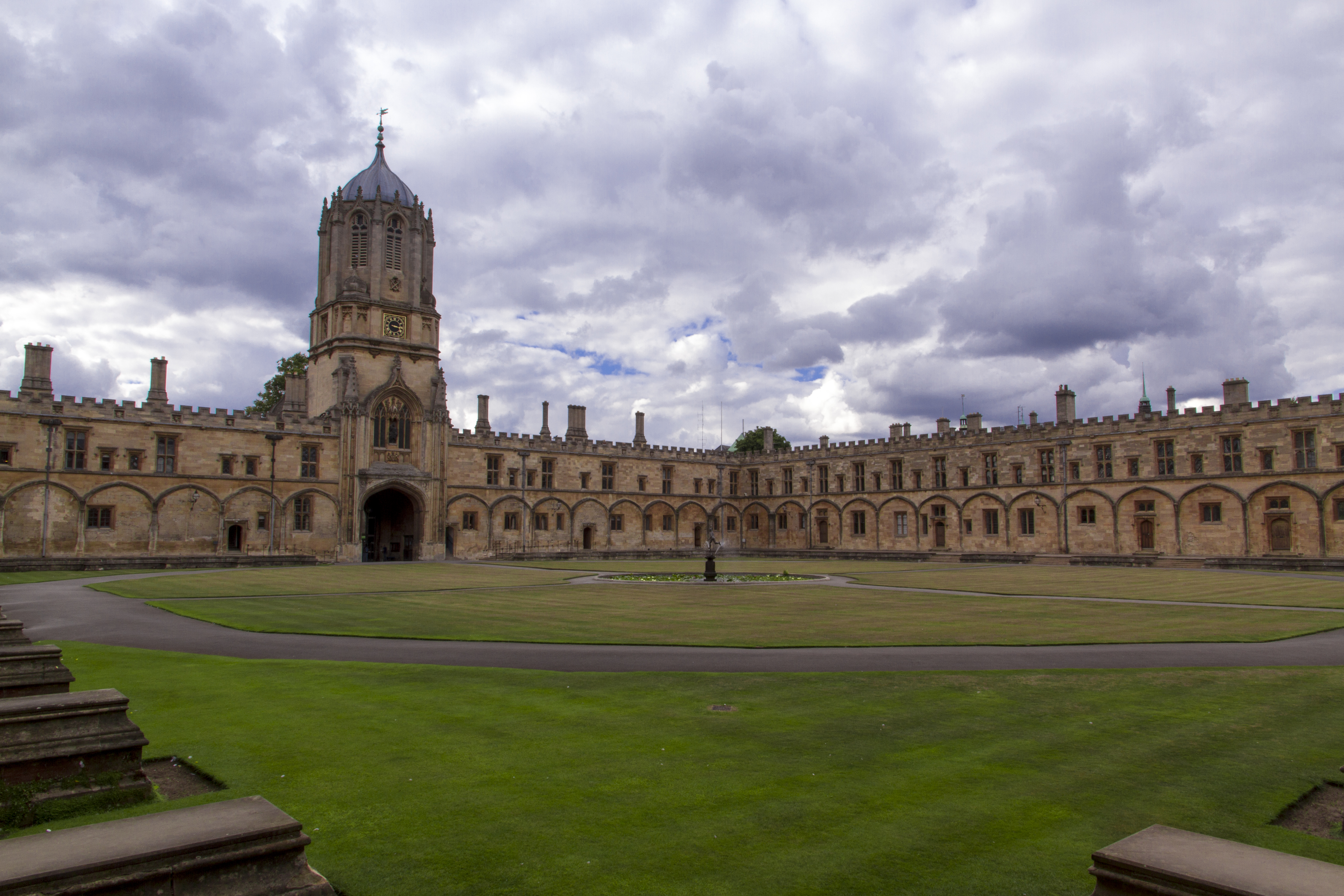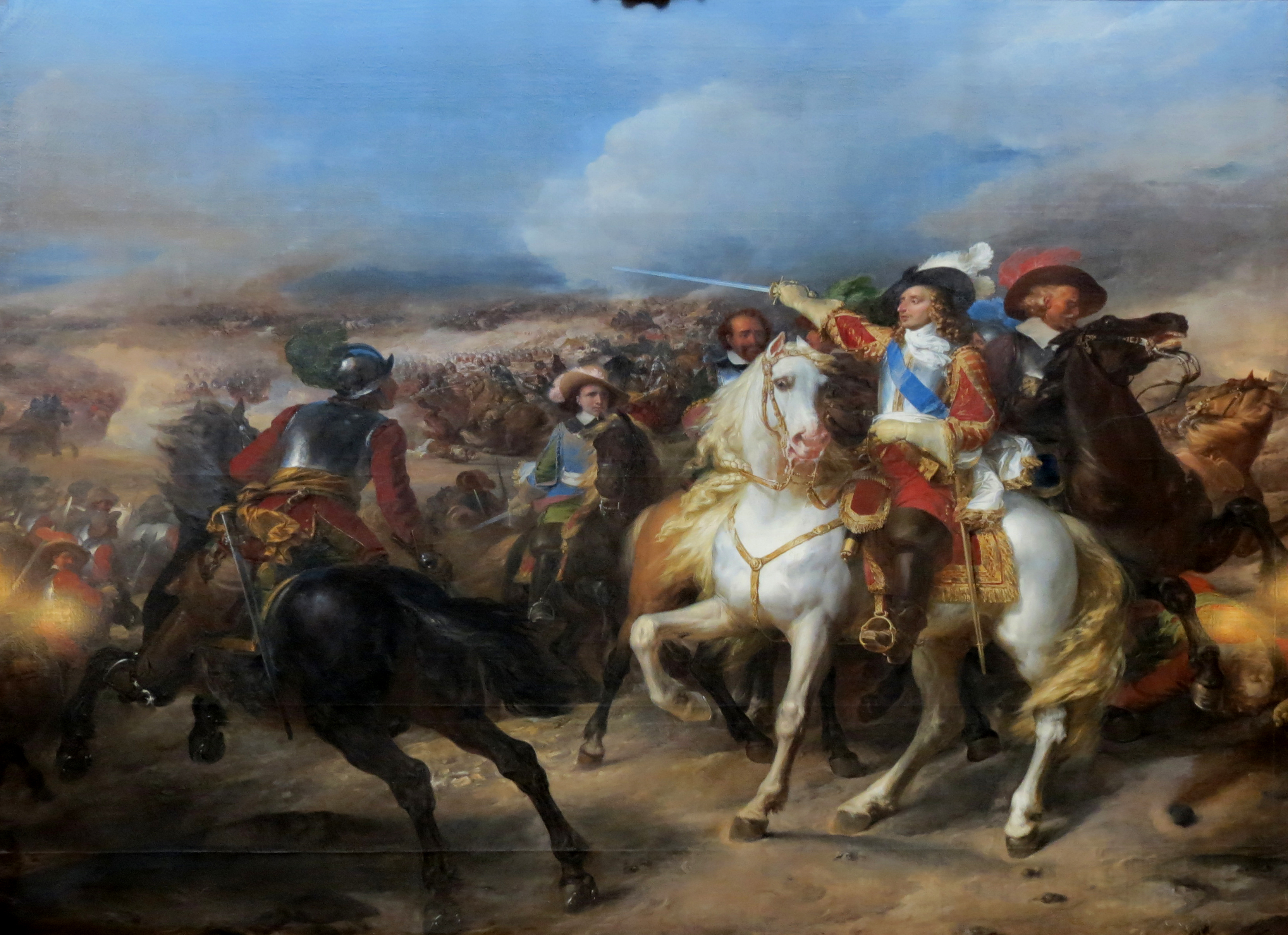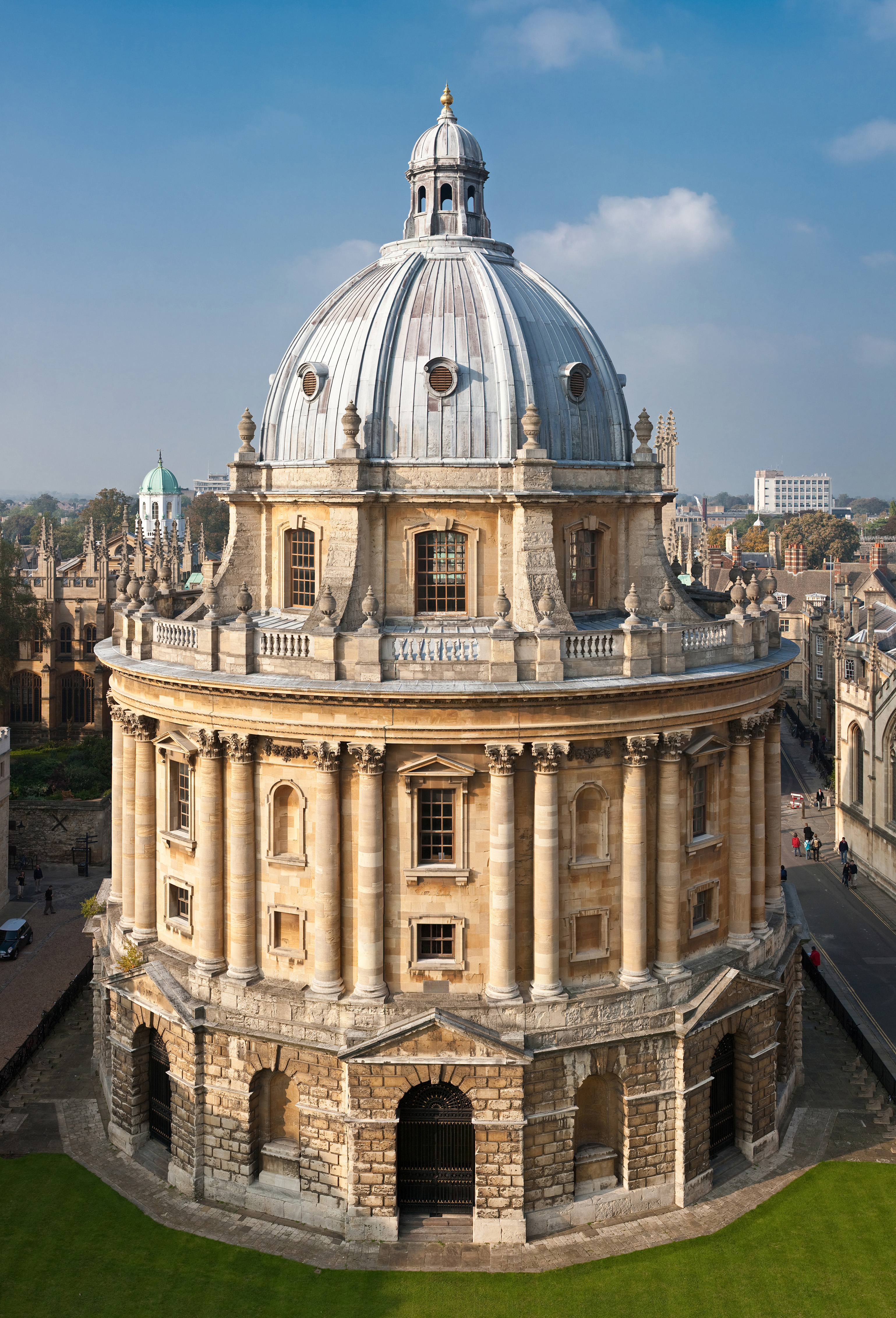|
Samuel Radcliffe
Samuel Radcliffe ( – 26 June 1648) was an University of Oxford, Oxford academic and clergyman. Radcliffe was born in Lancashire. He was educated at Brasenose College, Oxford, matriculating in 1597 aged 17, graduating Bachelor of Arts, B.A. 1601, Master of Arts (Oxford, Cambridge, and Dublin), M.A. 1604, Bachelor of Divinity, B.D. 1611, Doctor of Divinity, D.D. 1615. In the church, he held Living (Christianity), livings at Steeple Aston (where he founded a school in 1640) and Boxford, Bedfordshire, Boxford. He was university proctor in 1610, and was appointed Principal of Brasenose in 1614. During the Parliamentary occupation of Oxford (Parliament had captured Oxford at the Siege of Oxford in 1646), Radcliffe refused to recognise the authority of the Parliamentary visitation of the University of Oxford, Parliamentary visitors, who issued an order expelling Radcliffe as Principal in January 1648, and appointed Daniel Greenwood as Principal on 29 February. On 13 April the Chancell ... [...More Info...] [...Related Items...] OR: [Wikipedia] [Google] [Baidu] |
Siege Of Oxford
The siege of Oxford comprised the English Civil War military campaigns waged to besiege the Royalist controlled city of Oxford, involving three short engagements over twenty-five months, which ended with a Parliamentarian victory in June 1646. The first engagement was in May 1644, during which King Charles I escaped, thus preventing a formal siege. The second, in May 1645, had barely started when Sir Thomas Fairfax was given orders to stop and pursue the King to Naseby instead. The last siege began in May 1646 and was a formal siege of two months; but the war was obviously over and negotiation, rather than fighting, took precedence. Being careful not to inflict too much damage on the city, Fairfax even sent in food to the King's second son, James, and was happy to conclude the siege with an honourable agreement before any further escalation occurred. Oxford during the civil war The creation of the King's Oxford Parliament in January 1644 placed Oxford at the cen ... [...More Info...] [...Related Items...] OR: [Wikipedia] [Google] [Baidu] |
Alumni Of Brasenose College, Oxford
Alumni (singular: alumnus (masculine) or alumna (feminine)) are former students of a school, college, or university who have either attended or graduated in some fashion from the institution. The feminine plural alumnae is sometimes used for groups of women. The word is Latin and means "one who is being (or has been) nourished". The term is not synonymous with "graduate"; one can be an alumnus without graduating ( Burt Reynolds, alumnus but not graduate of Florida State, is an example). The term is sometimes used to refer to a former employee or member of an organization, contributor, or inmate. Etymology The Latin noun ''alumnus'' means "foster son" or "pupil". It is derived from PIE ''*h₂el-'' (grow, nourish), and it is a variant of the Latin verb ''alere'' "to nourish".Merriam-Webster: alumnus .. Separate, but from th ... [...More Info...] [...Related Items...] OR: [Wikipedia] [Google] [Baidu] |
17th-century English Anglican Priests
The 17th century lasted from January 1, 1601 ( MDCI), to December 31, 1700 ( MDCC). It falls into the early modern period of Europe and in that continent (whose impact on the world was increasing) was characterized by the Baroque cultural movement, the latter part of the Spanish Golden Age, the Dutch Golden Age, the French '' Grand Siècle'' dominated by Louis XIV, the Scientific Revolution, the world's first public company and megacorporation known as the Dutch East India Company, and according to some historians, the General Crisis. From the mid-17th century, European politics were increasingly dominated by the Kingdom of France of Louis XIV, where royal power was solidified domestically in the civil war of the Fronde. The semi-feudal territorial French nobility was weakened and subjugated to the power of an absolute monarchy through the reinvention of the Palace of Versailles from a hunting lodge to a gilded prison, in which a greatly expanded royal court could be more e ... [...More Info...] [...Related Items...] OR: [Wikipedia] [Google] [Baidu] |
1648 Deaths
1648 has been suggested as possibly the last year in which the overall human population declined, coming towards the end of a broader period of global instability which included the collapse of the Ming dynasty and the Thirty Years' War, the latter of which ended in 1648 with the Peace of Westphalia. Events January–March * January 15 – Manchu invaders of China's Fujian province capture Spanish Dominican priest Francisco Fernández de Capillas, torture him and then behead him. Capillas will be canonized more than 350 years later in 2000 in the Roman Catholic Church as one of the Martyr Saints of China. * January 15 – Alexis, Tsar of Russia, marries Maria Miloslavskaya, who later gives birth to two future tsars (Feodor III and Ivan V) as well as Princess Sophia Alekseyevna, the regent for Peter I. * January 17 – By a vote of 141 to 91, England's Long Parliament passes the Vote of No Addresses, breaking off negotiations with King Charles I, ... [...More Info...] [...Related Items...] OR: [Wikipedia] [Google] [Baidu] |
1580s Births
Year 158 ( CLVIII) was a common year starting on Saturday (link will display the full calendar) of the Julian calendar. At the time, it was known as the Year of the Consulship of Tertullus and Sacerdos (or, less frequently, year 911 ''Ab urbe condita''). The denomination 158 for this year has been used since the early medieval period, when the Anno Domini calendar era became the prevalent method in Europe for naming years. Events By place Roman Empire * The earliest dated use of Sol Invictus, in a dedication from Rome. * A revolt against Roman rule in Dacia is crushed. China * Change of era name from ''Yongshou'' to ''Yangxi'' of the Chinese Han Dynasty. Births *Gaius Caesonius Macer Rufinianus, Roman politician (d. 237 Year 237 ( CCXXXVII) was a common year starting on Sunday (link will display the full calendar) of the Julian calendar. At the time, it was known as the Year of the Consulship of Perpetuus and Felix (or, less frequently, year 990 ''Ab urbe co ... [...More Info...] [...Related Items...] OR: [Wikipedia] [Google] [Baidu] |
List Of Principals Of Brasenose College, Oxford
The head of Brasenose College, Oxford, Brasenose College, University of Oxford, is the Master (college), principal. The current principal is John Bowers (lawyer), John Bowers, who took up the appointment in October 2015. List of principals of Brasenose College References {{reflist Principals of Brasenose College, Oxford, Lists of people associated with the University of Oxford, Brasenose Principals Lists of university and college leaders, Brasenose College, Oxford ... [...More Info...] [...Related Items...] OR: [Wikipedia] [Google] [Baidu] |
Thomas Singleton (academic)
Thomas Singleton (1552 – 29 November 1614) was an English clergyman and academic. Singleton studied at Clare Hall, Cambridge for four years, before moving to Brasenose College, Oxford in 1573. He graduated B.A. 1574, M.A. 1578, B.D. 1586, D.D. 1597. He became a Fellow of Brasenose in 1576, and was Proctor in 1585–86. He was Principal of Brasenose College from 1595 until his death in 1614. He was twice Vice-Chancellor at the University of Oxford during 1598–9 and 1611–14. In the church, Singleton was a canon of St Paul's Cathedral from 1597, and of Hereford Cathedral Hereford Cathedral is the cathedral church of the Anglican Diocese of Hereford in Hereford, England. A place of worship has existed on the site of the present building since the 8th century or earlier. The present building was begun in 1079. S ... from 1614. Singleton died on 29 November 1614, and was buried in St Mary's Church. References 1552 births 1614 deaths Alumni of Clare Col ... [...More Info...] [...Related Items...] OR: [Wikipedia] [Google] [Baidu] |
University Church Of St Mary The Virgin
The University Church of St Mary the Virgin (St Mary's or SMV for short) is an Oxford church situated on the north side of the High Street. It is the centre from which the University of Oxford grew and its parish consists almost exclusively of university and college buildings. St Mary's possesses an eccentric Baroque porch, designed by Nicholas Stone, facing High Street, and a spire which is claimed by some church historians to be one of the most beautiful in England.Sherwood, Jennifer, ''A guide to the Churches of Oxfordshire'' pp. 149–151 (publ. Robert Dugdale in association with Oxfordshire Historic Churches Trust 1989) . Section reference for Architecture Radcliffe Square lies to the north and to the east is Catte Street. The 13th-century tower is open to the public for a fee and provides good views across the heart of the historic university city, especially Radcliffe Square, the Radcliffe Camera, Brasenose College, Oxford and All Souls College. History A church ... [...More Info...] [...Related Items...] OR: [Wikipedia] [Google] [Baidu] |
Daniel Greenwood
Daniel Greenwood ( – 29 January 1674) was an English clergyman and academic administrator at the University of Oxford. Greenwood was the son of Richard Greenwood of Sowerby, North Yorkshire. He matriculated at Lincoln College, Oxford in 1624, aged 19, and graduated B.A. in 1627 ( incorporated B.A. at Cambridge in 1632). He was appointed a Clifton Fellow of Brasenose College, Oxford in 1627, graduating M.A. 1629, B.D. 1641, D.D. 1649. In 1637, Archbishop Laud instructed the Vice-Chancellor (Laud's nephew-in-law Richard Baylie) to keep an eye on Greenwood, whose Puritan preaching had come to Laud's attention: In the church, Greenwood was Rector of Chastleton, Oxfordshire 1640–1662. During the Parliamentary occupation of Oxford (Parliament had captured Oxford at the Siege of Oxford in 1646), Samuel Radcliffe, Principal of Brasenose College, refused to recognise the authority of the Parliamentary visitors, who issued an order expelling Radcliffe as Principal in Janua ... [...More Info...] [...Related Items...] OR: [Wikipedia] [Google] [Baidu] |
Parliamentary Visitation Of The University Of Oxford
The parliamentary visitation of the University of Oxford was a political and religious purge taking place from 1647, for a number of years. Many Masters and Fellows of Colleges lost their positions. Background A comparable but less prominent parliamentary visitation of the University of Cambridge had taken place in 1644–5. The Siege of Oxford from 1644 to 1646 was one of the major military actions of the First English Civil War, given that the Royalist forces had their headquarters in Oxford city. The University of Oxford, broadly speaking, supported the Royalist side in the war, in particular in financial terms. The city surrendered to the parliamentary forces on 24 June 1646, and by 2 July parliament blocked new appointments in the university. By October a visitation was proposed, and an Oxford delegation made representations against it. First moves The initial step was the appointment of seven preachers of Presbyterian views, to bring in the use of the '' Directory for Pub ... [...More Info...] [...Related Items...] OR: [Wikipedia] [Google] [Baidu] |





